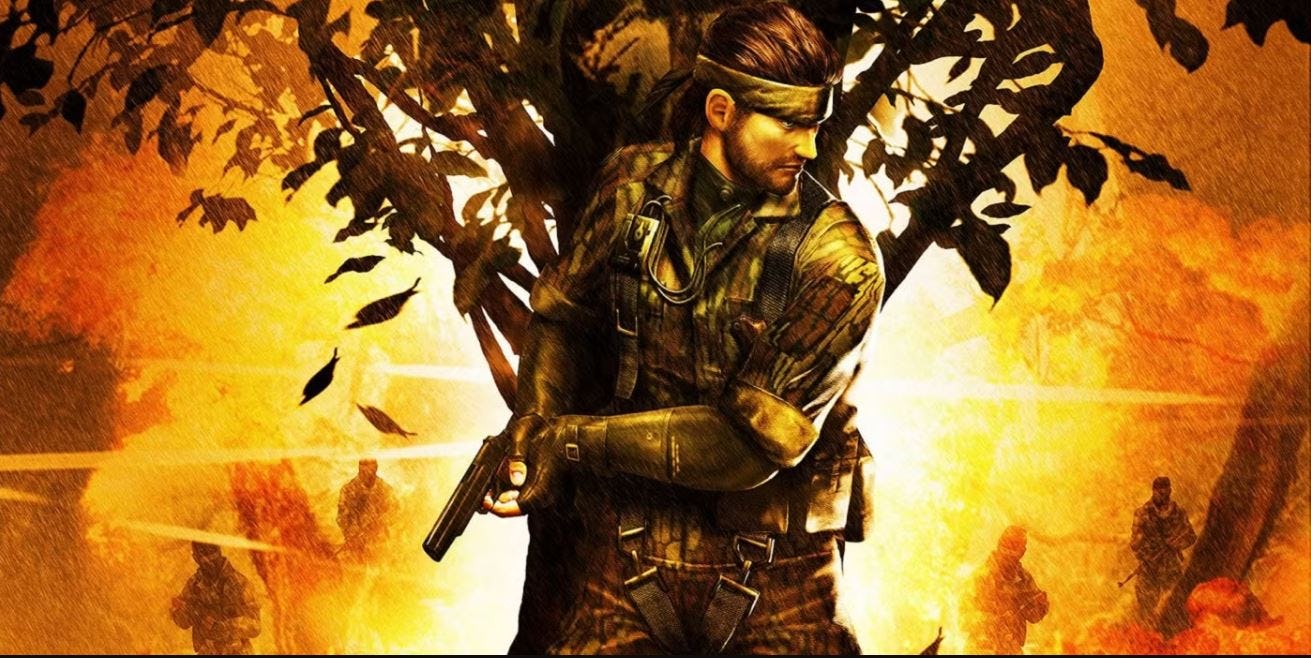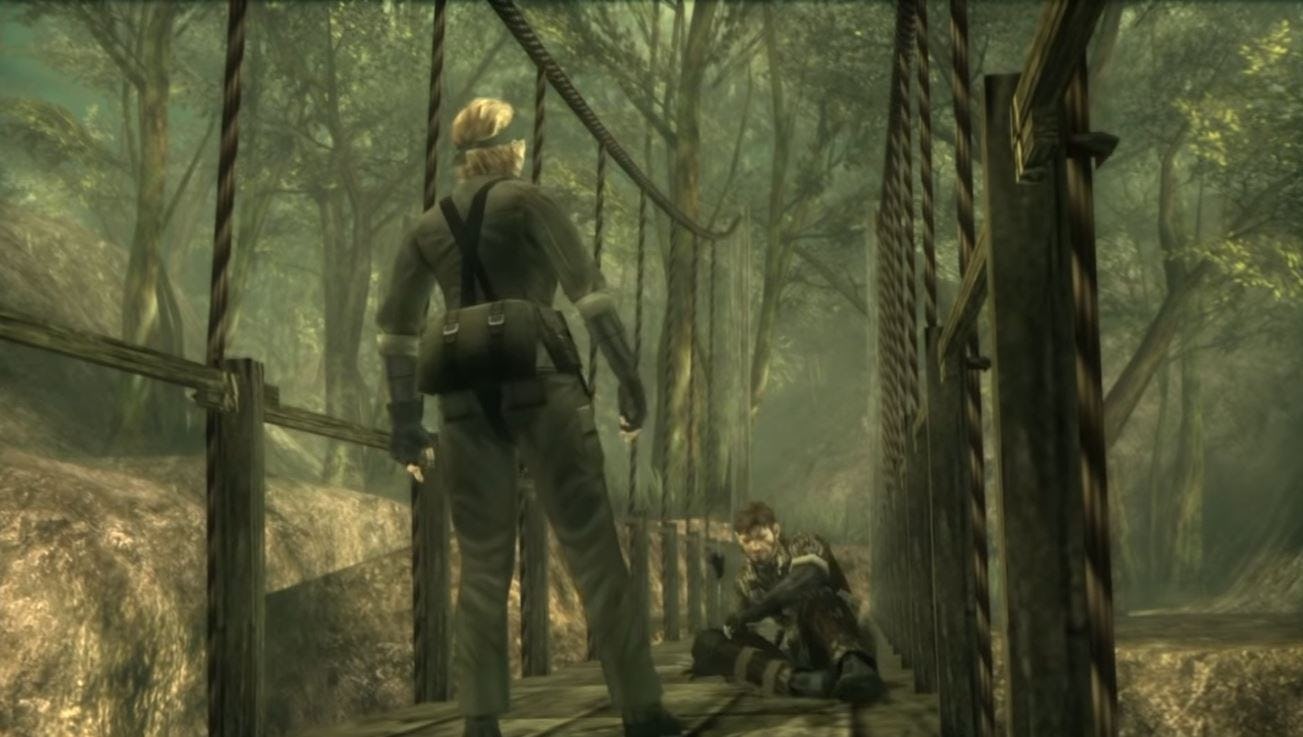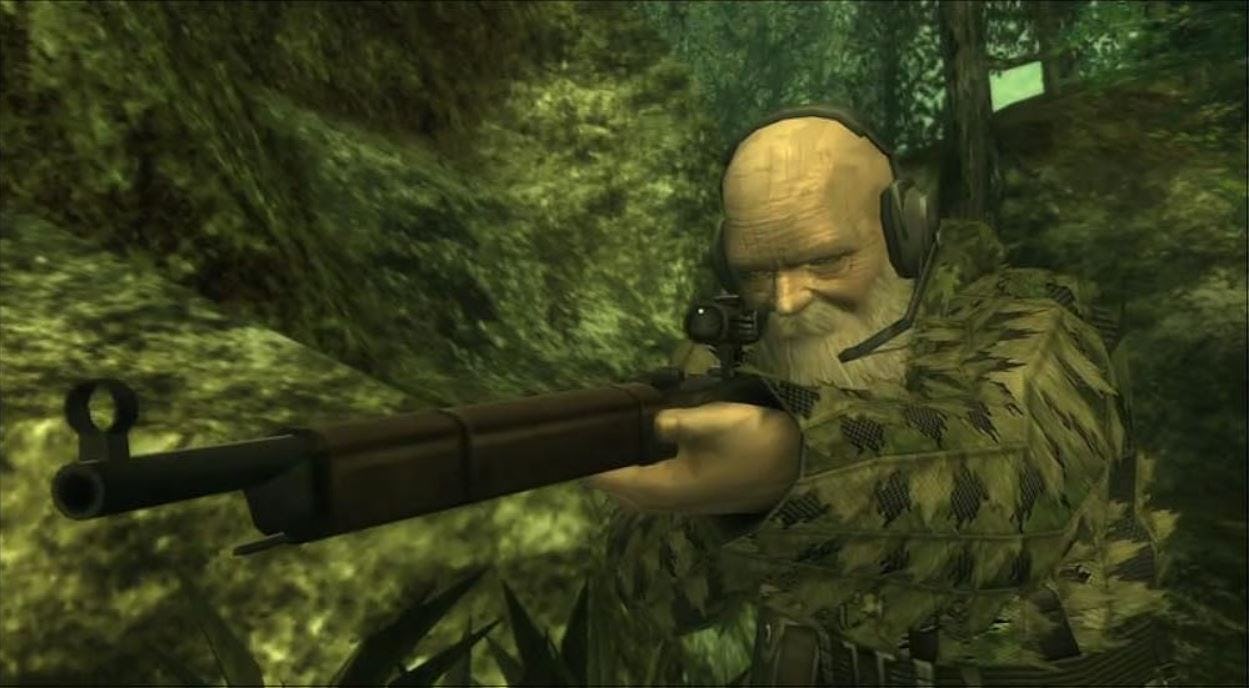
Legacy is a difficult thing to manage. Whether it's Marvel movies, Grand Theft Auto games, or British royalty, the weight of the past compounds the pressure for the future. Creators must grapple with fan expectations, many of whom have an encyclopedic knowledge of the lore, along with the creative impulse to evolve into something new and satisfying. Producing a legacy’s prequel is exponentially harder because even minute decisions must have a consequential echo somewhere. But when one nails a prequel, it can change everything. That’s what happened 20 years ago when Metal Gear Solid 3: Snake Eater instantly became the standard for judging every other title in the series.
Released on November 17, 2004, Metal Gear Solid 3, the third title on PlayStation, but fifth in the series, was an instant hit for Konami and further cemented director Hideo Kojima’s legacy as gaming’s premier auteur. His signature stealth-action style is complimented by superb dialogue and a gargantuan narrative arc that does justice to the origins of Big Boss, the villainous centerpiece of the sprawling and complex saga at the heart of the franchise.
Critical reception for Metal Gear Solid 3 was glowing, currently sitting at 91 on Metacritic, and it has sold roughly four million copies to date. The highest praise came from the creator himself. “I always say when I come up with a new Metal Gear Solid game that it's a masterpiece, but this time I think we nailed it,” Kojima told IGN in December 2004. “I think it is a masterpiece.”
Metal Gear Solid 3: Snake Eater takes place in 1964, during the height of tensions between the U.S. and the Soviet Union, and follows CIA operative Naked Snake on a mission deep within the Soviets. Tasked with rescuing weapons scientist Nikolai Sokolov, Snake’s mission intensifies when he learns his former mentor, The Boss, has defected to the USSR. The Boss is responsible for delivering nuclear warhead technology to Colonel Volgin, a powerful Soviet commander. Volgin’s ambition to deploy a superweapon, the Shagohod, threatens the global balance of power. Snake is forced to confront The Boss, his lifelong mentor and friend, as well as members of her elite Cobra Unit.

The boss fights against Cobra Unit are special. Easily some of the best in the franchise, they bring the classic Metal Gear Solid twists players had come to expect by forcing them to think creatively about a boss’s weak points. There’s no glowing red targets here, instead players have to look for context clues to decipher things like using rotten food to poison a boss and damage their stamina.
I’d be remiss not to mention the closing boss fight against, fittingly, The Boss. It is as challenging as it is gut-wrenching, the culmination of Snake’s existential doubts as he is forced to take on his mentor in a gruesome fight, pitting loyalty to a commanding officer against duty to the mission. The setting itself is visually stunning, and the music and pacing as elegant as anything you’d see in any medium. The forthcoming remaster Metal Gear Solid Delta: Snake Eater should draw fans in solely on the strength of revisiting this sequence with updated graphics and sound design. A drawn-out sniper battle against another boss known as The End is also a fan favorite, and arguably the best sniper battle in all of gaming.

The game’s lush jungle setting requires Snake to survive off the land, utilizing camouflage, traps, and stealth tactics to navigate enemy forces. These were bold innovations to the mechanics, especially for such a well-established series. Instead of re-treading the same stealth path fans had come to expect, Metal Gear Solid 3 introduced tons of new elements. Most notably, the litany of high tech gadgets were gone because the game takes place in the distant past instead of the near future. Its Vietnam Era vibes offered up lots of new opportunities for sneaky shenanigans with a low-tech twist.
“The series was turning into a radar game where you just pay attention to the radar and not use your visual senses or listening,” Kojima told IGN. “That's what I wanted people to depend on instead of the radar so in the jungle I wanted people to listen to the grass moving or noise.”
Snake Eater wasn’t just a clever name, either. Players will spend a lot of time hunting critters in the jungle to use for food in order to replenish an ever-dwindling stamina bar. Stamina impacts all sorts of things, from how fast you heal, how steady you shoot, and how long you can swim underwater. An in-depth surgery screen also requires players to do more than just slap on a health pack. Different injuries require different treatments and those supplies must be carefully managed.

It’s not a surprise the game is set for a remake, even after 20 years it ages incredibly well thanks to Kojima’s vision to make it more than a bloodbath. The pacing is exquisite, and there’s something so unique about sitting in silence watching the 99-second cool down timer on enemy patrols drop to zero. Games are so often concerned with keeping the momentum going it’s jarring to literally stop and wait, even for such a short time. Most games are concerned with filling up dozens of hours, but Metal Gear Solid 3 pulls a magic trick in making the weight of a few minutes feel like an eternity.
Through its complex story, Metal Gear Solid 3: Snake Eater explores themes of loyalty, sacrifice, and moral ambiguity, examining what it means to be a soldier. The narrative not only delves into the personal journey of Snake, who later becomes the infamous Big Boss, but also sheds light on the tangled alliances and ideologies that define the Metal Gear universe, setting the stage for future conflicts that shape the entire series as well as Kojima’s legacy itself.







